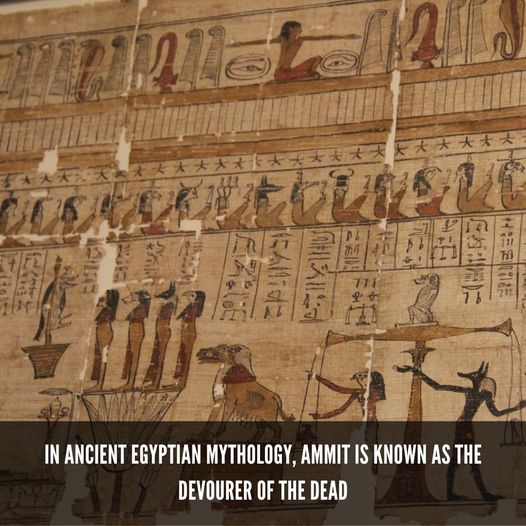Ammit, often referred to as the “Devourer of the Dead” or the “Eater of Hearts,” is a fascinating figure in Ancient Egyptian mythology. Neither a goddess nor a demon in the traditional sense, Ammit serves as a hybrid creature that fulfills a specific role in the Egyptian concept of the afterlife. This article delves into the history, significance, and various interpretations of this fearsome entity.
Ammit is usually depicted as a composite creature, with the head of a crocodile, the torso of a lion, and the hindquarters of a hippopotamus. Each of these animals was feared by the ancient Egyptians for their ferocious natures. The combination of these elements into a single entity symbolizes a form of ultimate dread, one that awaits those who fail the test of moral purity in the afterlife.
Role in the Weighing of the Heart Ceremony
Ammit’s most crucial function is in the “Weighing of the Heart” ceremony, which is beautifully illustrated in the Egyptian Book of the Dead. When a person dies, their heart, considered the seat of the soul and morality, is weighed against the feather of Ma’at, the ancient Egyptian concept of truth and justice. If the heart is lighter than the feather, the deceased has led a righteous life and is allowed to enter the afterlife. However, if the heart is heavier, tainted by sins and moral failings, it is given to Ammit to devour, and the person’s soul is doomed to a restless, eternal wandering.
The Symbolism of Ammit in a Moral Society
Ammit serves as a potent symbol for the moral and ethical codes that guided Egyptian society. Her presence is a grim reminder of the consequences of immoral behavior, underlining the importance of Ma’at in maintaining societal and cosmic order. The fear of being devoured by Ammit could be seen as a deterrent, encouraging individuals to act in alignment with the principles of justice and integrity.
Cultural Impact and Later Interpretations
Over time, the concept of Ammit seeped into the consciousness of cultures that came into contact with Egypt. In some Greek writings, she’s equated with other monstrous entities, though her function remains relatively consistent. Modern works of fiction and movies have also picked up on Ammit as a character, using her as a symbolic representation of divine retribution or cosmic justice.
The fear of Ammit could also be seen as a psychological tool used by Egyptian society to enforce the rule of law. The concept of divine justice, meted out by an unforgiving entity that consumes the wicked, provides a compelling motivation for maintaining social harmony.

In modern times, Ammit has become a part of popular culture, appearing in video games, movies, and books. This reintroduction serves as a testament to the character’s enduring fascination and universal themes of justice, retribution, and fear of the unknown.
Ammit is not merely a creature of terror but a symbol imbued with deep cultural and moral significance. Her role in the Weighing of the Heart ceremony is not just punitive but educational, a symbolic representation of the balance between good and evil, right and wrong. Though she might be frightening to contemplate, her existence is a reminder of the high moral and ethical standards the ancient Egyptians aspired to, principles that continue to resonate with us today.
In the grand tapestry of Egyptian mythology, Ammit stands out as a unique figure. Her composite form and the dread she inspires make her memorable, but it’s her role in the moral framework of the ancient Egyptian worldview that makes her truly fascinating. As long as humans grapple with questions of morality and the afterlife, the legend of Ammit will remain a compelling subject of study and interpretation.
